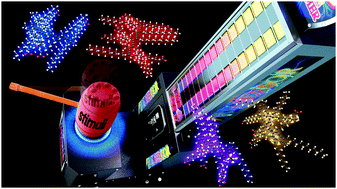Polydiacetylenes (PDAs) have received increasing attention as smart materials owing to their unique properties. Upon addition of various stimuli, blue PDAs can undergo a colorimetric transition from blue to red along with a change from non-fluorescent to fluorescent. The optical changes can be readily detected by the naked eye and by using absorption and fluorescence spectrometers. These properties make PDAs excellent materials for use in platforms for sensing chemical or biological targets. In recent years, a number of biosensors and chemosensors based on the optical responses of polydiacetylenes have been reported. In this review, recent advances made in this area were discussed following a format based on different cognizing targets, including temperature, metal ions, anions, surfactants, amines, water, gas, sugars, hydrocarbons, neomycin, heparin, virus, enzymes, bacteria, and cancers. Emphasis is given to the methods used to prepare PDA sensing systems as well as their sensing performance.

